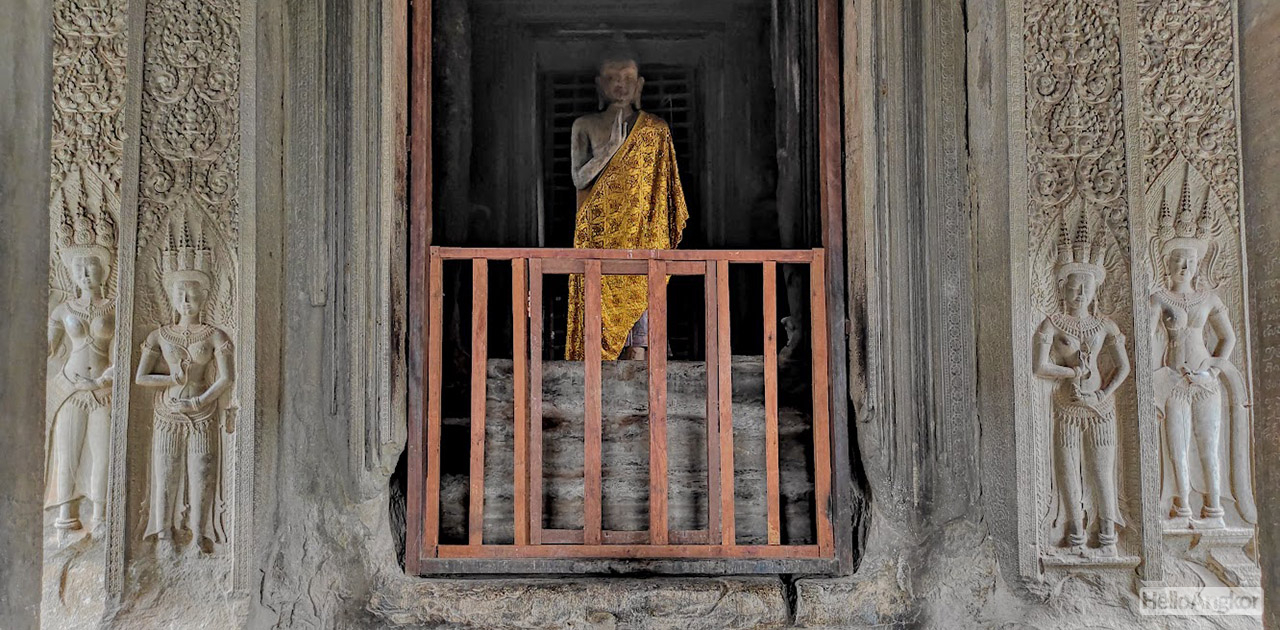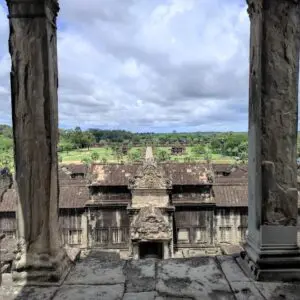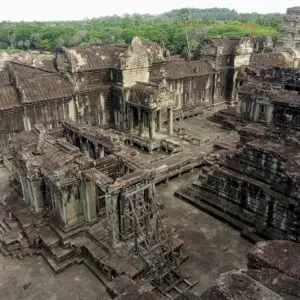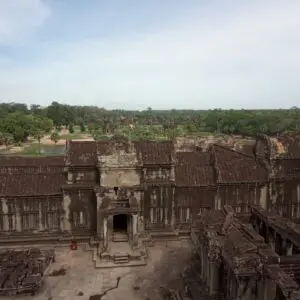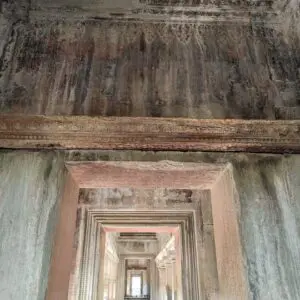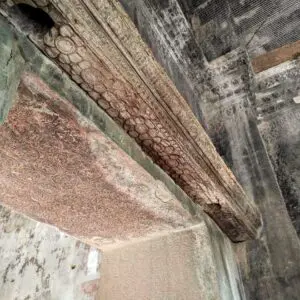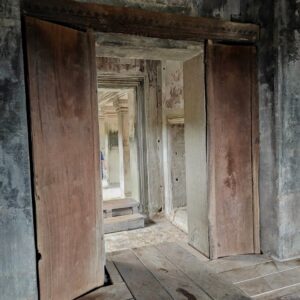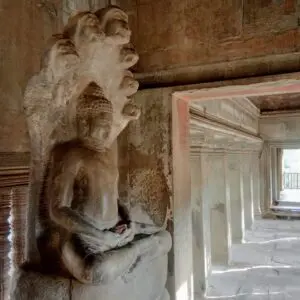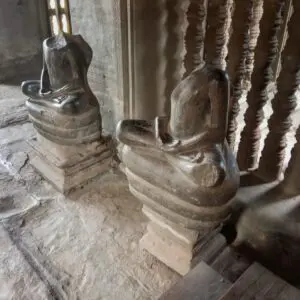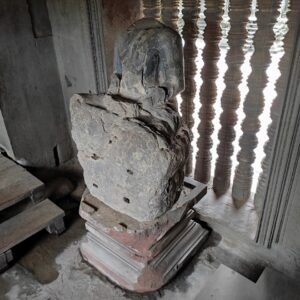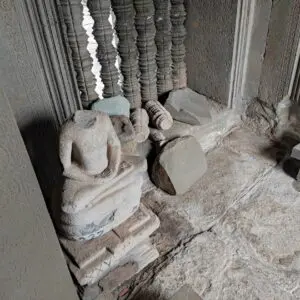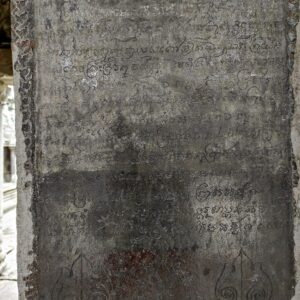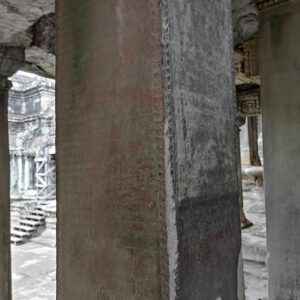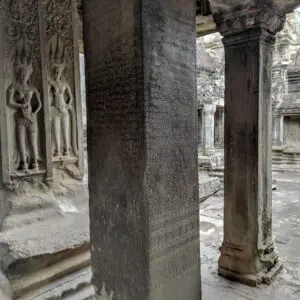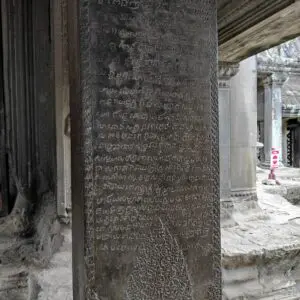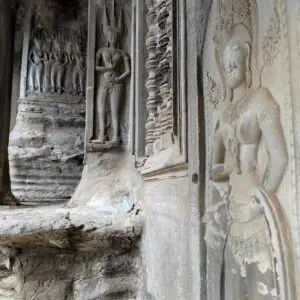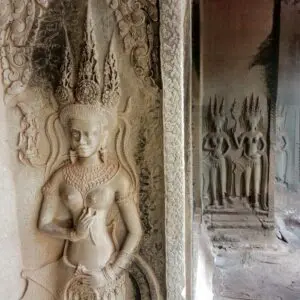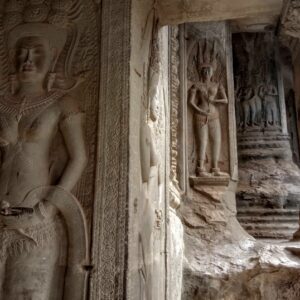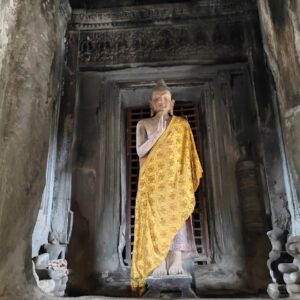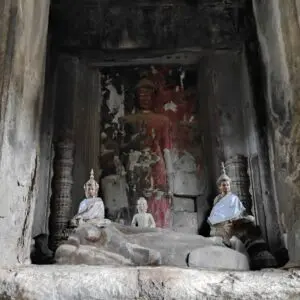- Area: Siem Reap Province > Krong Siem Reab > Sangkat Nokor Thum
- | Type: Ancient Remains & Temples
The penultimate feature of the great temple of Angkor Wat, the third level, or Bakan, is the enormous thirty-meter high substructure that supports the amazing quincunx of towers. It rises 30 meters with sloping sides featuring narrow stepped staircases at each corner and a central staircase on its western side. Today you can reach the top by a more practical wooden staircase on the northeast corner.
See here for the complete guide to Angkor Wat, and here we’ll continue on with a focus on the Bakan. Here’s a layout map of Angkor Wat highlighting the Bakan
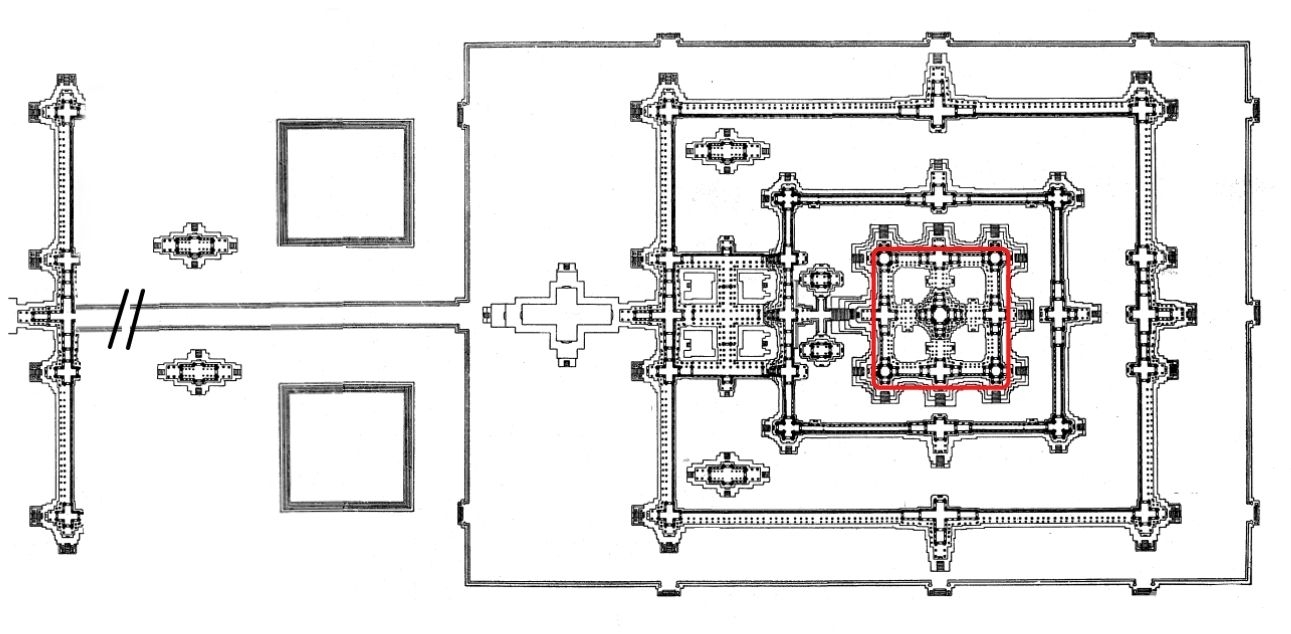
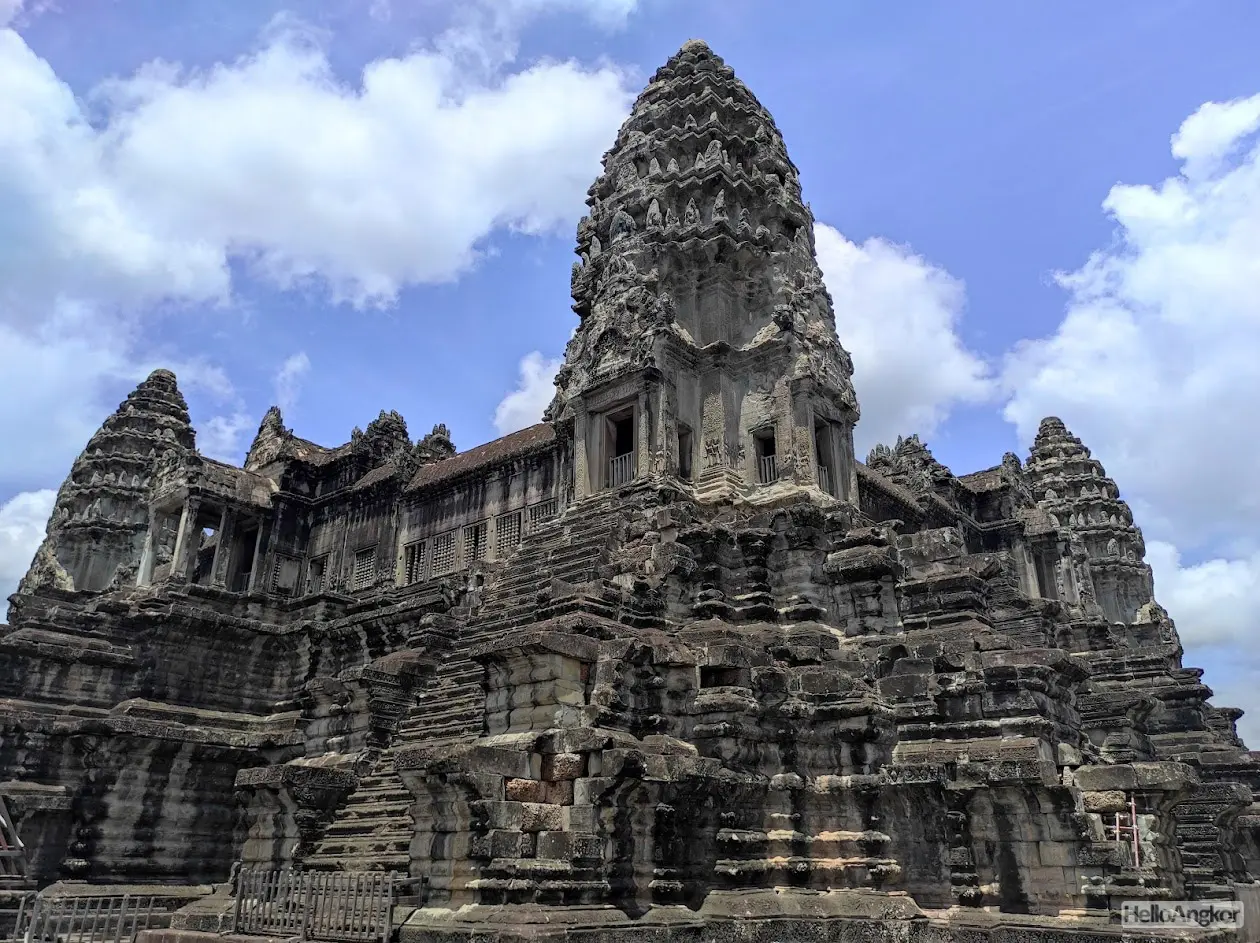
Looking from the second level up to the towers is a spectacular sight and it’s almost as if the second level, especially the western side, was designed just with that in mind. Around the base of the third level, you can see the ornately decorated side molding that is typical of the more elaborate Khmer temples.
Still looking up, and best viewed with a zoom lens, you can see the ornate pediments and lintels above each doorways that are flanked by Apsara carvings, also note the ornately decorated walls with a square pattern enclosing a medallion broken by windows all around.
Up the stairs and on top there is a gallery all the way around the perimeter, the tower rising from each corner, and galleried walkways on each side leading into the central sanctuary that resides below the massive central tower. The central tower rises 42 m into the air from this platform. Around the gallery there are also porticos at each corner and at the center on the western side that afford amazing views of the temple’s lower levels, grounds, and even out further to other Phnom Bakeng and Phnom Kulen.
Wooden Features – Each corner tower was likely its own sanctuary once featuring wooden doors able to be closed off, it’s likely that the gallery also had an ornate wooden roof.
Statuary – can been seen around the gallery too, the most impressive is the Buddha on Naga located near the central shrine’s west walkway which some reports mention came from inside the central sanctuary. Remnants of other Buddha statues can be seen and also a Buddhist stele.
Inscriptions – On the south walkway to the central sanctuary, you can see a lot of inscriptions on the pillars. All were added by monks in the post-Angkor period with some dated to the 16th century. They are recorded as K 303 group. More on inscriptions at Angkor Wat.
The Central Sanctuary – underneath the central tower, as mentioned, has doorways on each side that are flanked by some stunning Apsara carvings as you’d expect. The doorways were originally believed to be open to the outside but during later eras Buddhist monks walled off the very inner part of the sanctuary blocking each side with stonework and carving standing Buddhas into each of the false doors.
Wooden statues and other Buddhist ornaments were also placed in front of the doorways which you can still see today.
In 1908, Commaille opened the southern doorway of the central chamber to reveal Buddhist statues and as Henri Marchal describes, some rare fragments of Bramanist imagery. It wasn’t until 1934 when Marchal took that exploration further and excavated the central deposit well of Angkor Wat without finding much but after excabvating to a depth of 23 m they found the foundation deposits of two circular gold leaves and crystals. Any other deposits and the possible remains of the King Suryavarman II (the entombed and temples constructer), had long gone. If you are interested in that excavation there is more here.

